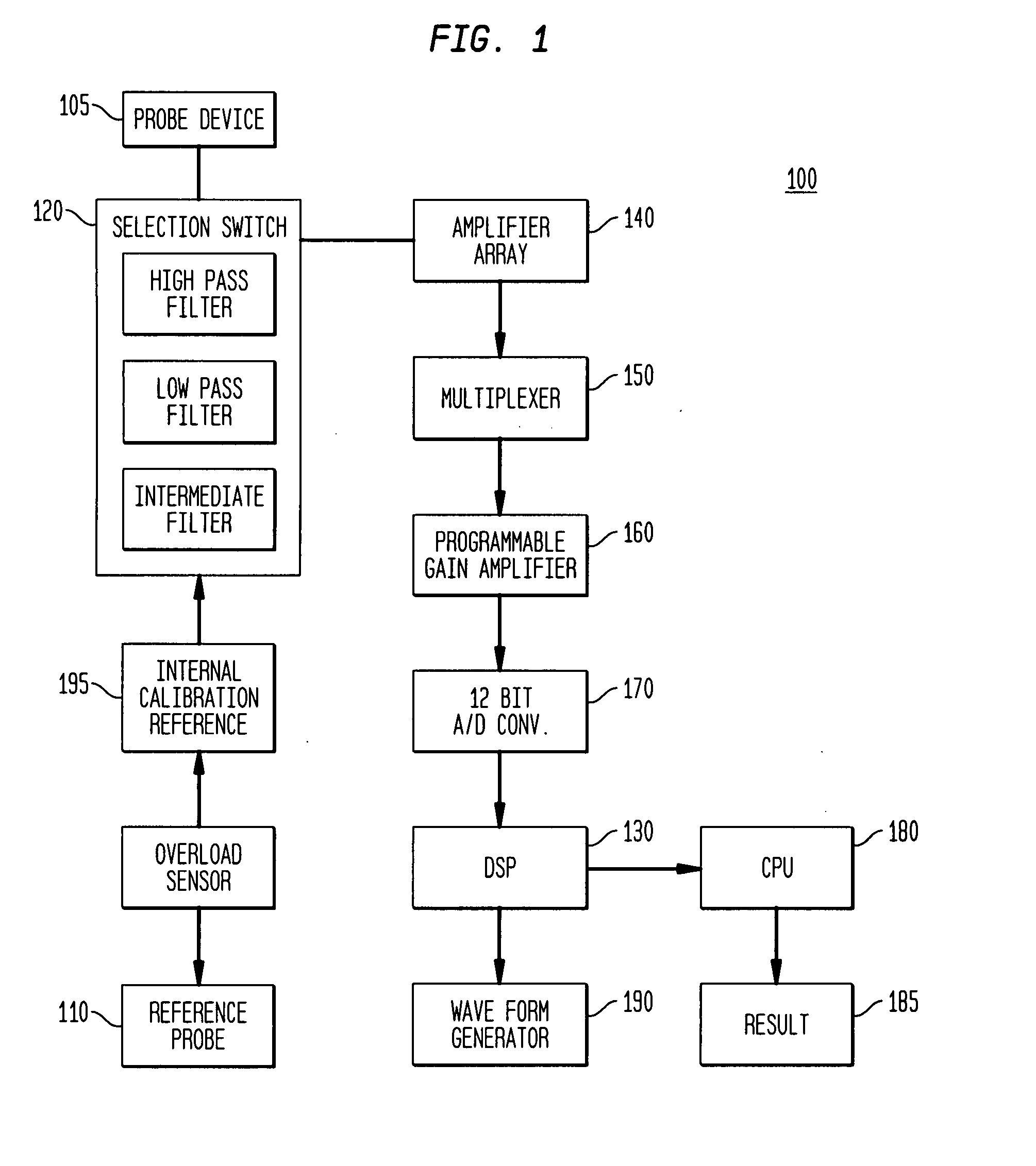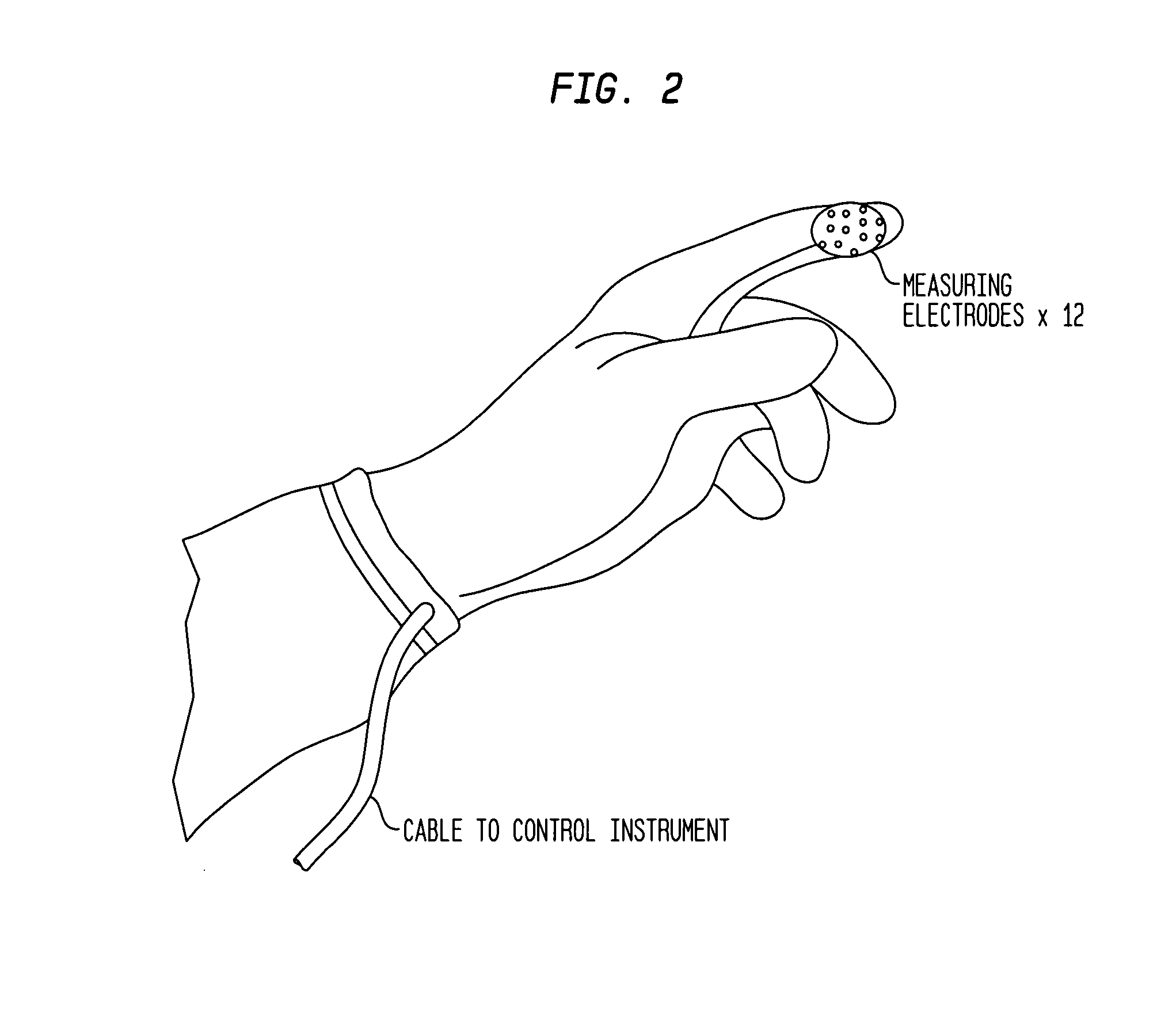Electrophysiological approaches to assess resection and tumor ablation margins and responses to drug therapy
a technology of applied in the field of electrophysiological approaches to assess resection and tumor ablation margins and drug therapy responses, can solve the problems of high mortality rate, requiring expensive, complex, invasive, and/or uncomfortable procedures,
- Summary
- Abstract
- Description
- Claims
- Application Information
AI Technical Summary
Benefits of technology
Problems solved by technology
Method used
Image
Examples
example 1
Colon Cancer
[0079] In colon cancer, the following electrophysiological changes have been observed during the development of the abnormal tissue: loss of electrogenic Na+ transport, up-regulation in Na / H exchange, down-regulation in K+ conductance, decrease in basal Cl− absorption, and down-regulation in c-AMP (cyclic adenosine-3′,5′-cyclic monophosphate) stimulated Cl− secretion. A number of pharmacological and hormonal manipulations can be performed to detect these ion transport alterations.
[0080] By using electrolyte conductive medium (ECM) of different concentrations, the conductance of specific ions can be estimated and the response to different pharmacological probes can be determined. Different pharmacological agents are administered that influence electrophysiological properties of normal bowel, but have minimal or different effects on pre-cancerous or cancerous tissue. For example, glucocorticoids or mineralocorticoids, administered by injection or orally, increase the tra...
example 2
[0102] As mentioned above, impedance and DC electrical potential have been used separately at the skin's surface to diagnose breast cancer. In the current invention, the impedance characteristics of the overlying skin or epithelium are measured and factored in to the diagnostic interpretation of the data. For example the surface potential may be more positive (or less negative) than the reference site because of increased conductance of the overlying skin, rather than because of an underlying tumor.
[0103] The electrodes are placed over the suspicious region and the passive DC potential is measured. Then AC impedance measurements are made as discussed below. The variable impedance properties of the overlying skin may attenuate or increase the measured DC surface electropotentials. Alternatively, impedance measurements at different frequencies may initially include a superimposed continuous sine wave on top of an applied DC voltage. Phase, DC voltage and AC voltage will...
example 3
[0125] Using methods similar to those described with respect to colon cancer, it is possible to use pharmacological and hormonal agents to enhance electrophysiological alterations caused by nasopharyngeal cancer. One exemplary method would be a nasopharyngeal probe that would include wells providing for varying concentrations of K+ and would perform simple DC measurements.
PUM
 Login to View More
Login to View More Abstract
Description
Claims
Application Information
 Login to View More
Login to View More - R&D
- Intellectual Property
- Life Sciences
- Materials
- Tech Scout
- Unparalleled Data Quality
- Higher Quality Content
- 60% Fewer Hallucinations
Browse by: Latest US Patents, China's latest patents, Technical Efficacy Thesaurus, Application Domain, Technology Topic, Popular Technical Reports.
© 2025 PatSnap. All rights reserved.Legal|Privacy policy|Modern Slavery Act Transparency Statement|Sitemap|About US| Contact US: help@patsnap.com



